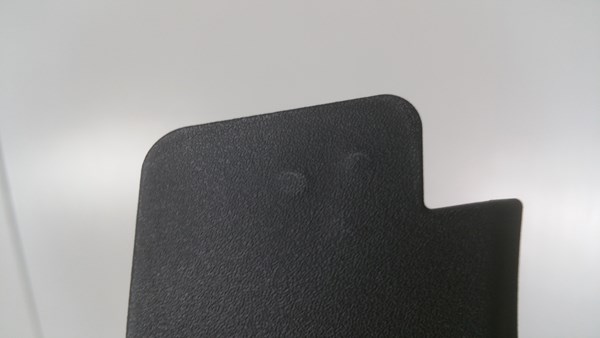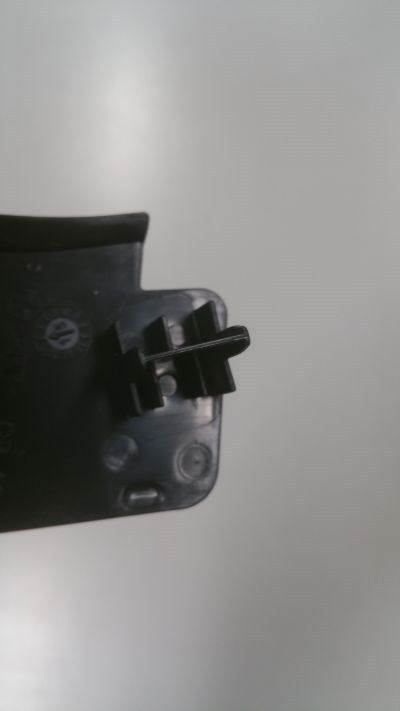The Designer's Edge: Plastic Part Sticking, Part 1
Most of you have experienced issues with a plastic part sticking in the cavity, core, lifters, slides or ejector pins, and a typical response is to polish or add undercuts. However, if you understand how materials react to certain surface finishes and temperatures a more robust solution is possible. Opposite side showing the ejector pins.

Pin push on the visual surface. The stress is from the plastic sticking in the rib detail.
Most of you have experienced issues with a plastic part sticking in the cavity (cover half), core (ejector half), lifters, slides or ejector pins, and a typical response is to polish or add undercuts. However, if you understand how materials react to certain surface finishes and temperatures a more robust solution is possible.
There are numerous root causes. For example, part design, mold design, lack of cooling, improper texture depth, cutter marks, EDM and surface finish. However, it is important to keep in mind that what works for one plastic material does not necessarily work for others.
Many process technicians will process around these issues, but that only creates a smaller processing window for issues down the road. If you can learn to understand the variations among different plastics, you can design a better mold and address future issues.
I have always had my focus on the steel to create a large processing window. Whenever you are pushing buttons and allowing the plastic to control the situation, you are not always addressing root cause. This is under the assumption that recommended parameters for the plastic are being used. The concern is when a change to the process is made and it appears to solve the issue, when in reality it is right on the edge of re-occuring.
Oftentimes, a change in water temperature will be made. This is not always a robust solution because if temperatures are offset between the halves, mold wear occurs. Another solution is polishing to address a sticking issue, which can cause pin push. For example, one time I was working on an area and removed the pin push. The process technician said, “Great, thanks." I responded “We're not done yet. We need to prove we have a robust window.” So we increased our pack/hold pressures above our set point to make sure the pin push was still not present. This is an example of the factors that are often overlooked when ensuring an issue is eliminated.
Next month I will dive deeper into some troublehshooting solutions for sticking issues that consider the sticking location (stationary or moving mold half), and plastic material and mold components being used.

Opposite side showing the ejector pins.
You can read the next part in the series by clicking here.














